Tok ples: Fongaar
Scientific name: Ipomoea macrantha Roemer & Schultes; Synonyms: Ipomoea tuba (Schlechtend.) G. Don; Plant family: Convolvulaceae
What is the plant like?
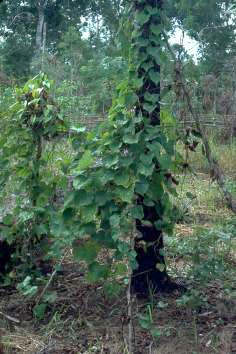
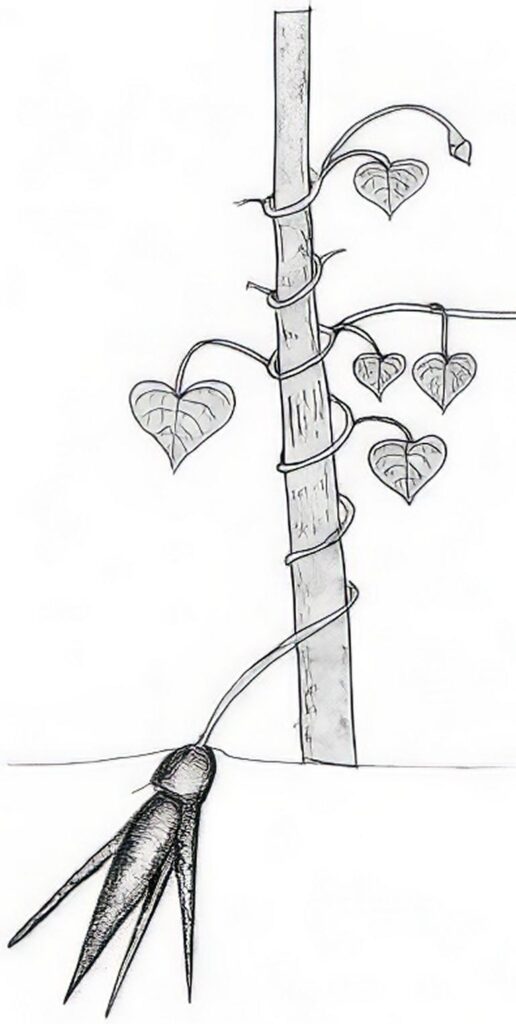
The plant has a long angular vine 5 to 6 metres long and it climbs up stakes. The leaves are almost round and are produced singly along the vine. There is also some variation in leaf shape. Flowers are somewhat like sweet potato flowers and are produced at the top of the vine.

Under the ground it produces a group of large fleshy roots shaped like cassava roots. These are harvested after the vine and leaves die back. The flesh inside the root is white. There is slight variation in the plant with both long and more rounded tubers. In some places the plant grows wild and is not eaten.


Distribution of Fongaar
Fongaar occurs at low altitudes probably up to 1300 m. It is a plant of the drier open woodland areas and grows naturally near the beach.
How is it grown?
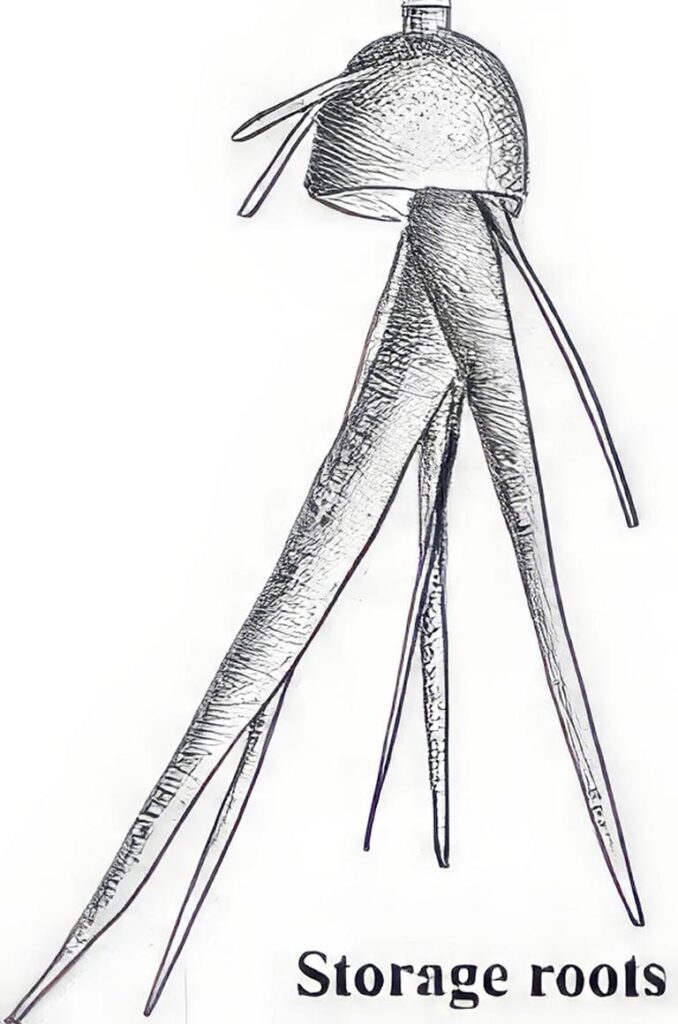
People plant a section of the top of the fattened root which first grows vines and leaves, then the thickened storage organ is produced. The planting time depends on rains. In the Morehead area they can be planted in November if the rains come but are otherwise planted in December. They can be ready for harvest by July at the earliest and more commonly in September. So, they take 7 – 9 months to grow to maturity. Other parts of the fattened root can also be used for planting.
The root can be stored for some time after harvest, and this is normally done along with yams in the yam houses. They can be stored for 4 to 5 months.
How is it used?
The Fongaar roots are simply roasted and eaten in the same way as yams. The thickened roots can be up to 65 cm long and 12 cm wide. They can weigh up to 2.5 kg.
Pests and diseases
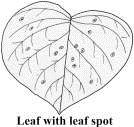
These have not been studied. An obvious leaf spot occurs on the leaves. This is most likely due to a fungus.
________________________________________________________________________________________________________________
Text and all photos at this article © Food Plant Solutions. The professional background and contact information of the author of this article can be found here.
.


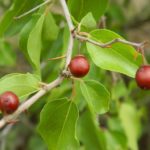


2 comments
Kurt Hoelzl
As I’m neither a medical doctor nor a pharmacist, I will abstain in all my writings about medically related topics.
As an exception to answer your question: Stems and leaves of I. macrantha are crushed in water and used as shampoo. To kill lice, the shampoo is used in concentrated form. And a preparation of young leaves can be pounded and mixed with coconut oil. This will be applied to boils, toothaches, and bruises and rubbed into painful areas, which should relieve swelling.
This information is not based on my knowledge or experience but was retrieved from: Fosberg, F. Raymond, and Marie-Helene Sachet. Flora of Micronesia, 3: Convolvulaceae. Smithsonian Contributions to Botany, Washington 1997.
Beth
The article provides an interesting overview of the Fongaar plant (Ipomoea macrantha), but I noticed a lack of information regarding its medicinal properties. Are there any known health benefits or traditional medicinal uses associated with this plant?